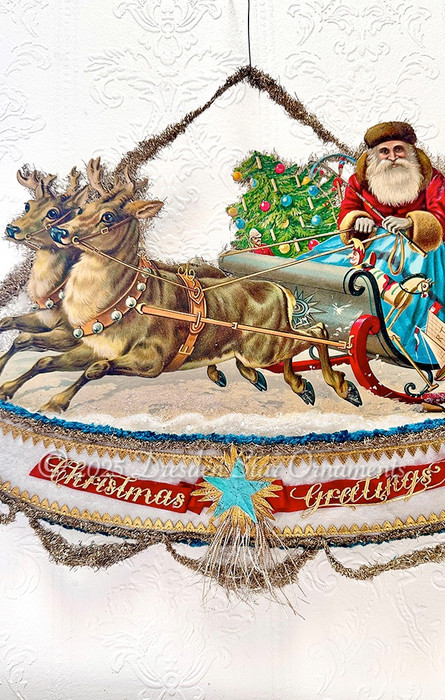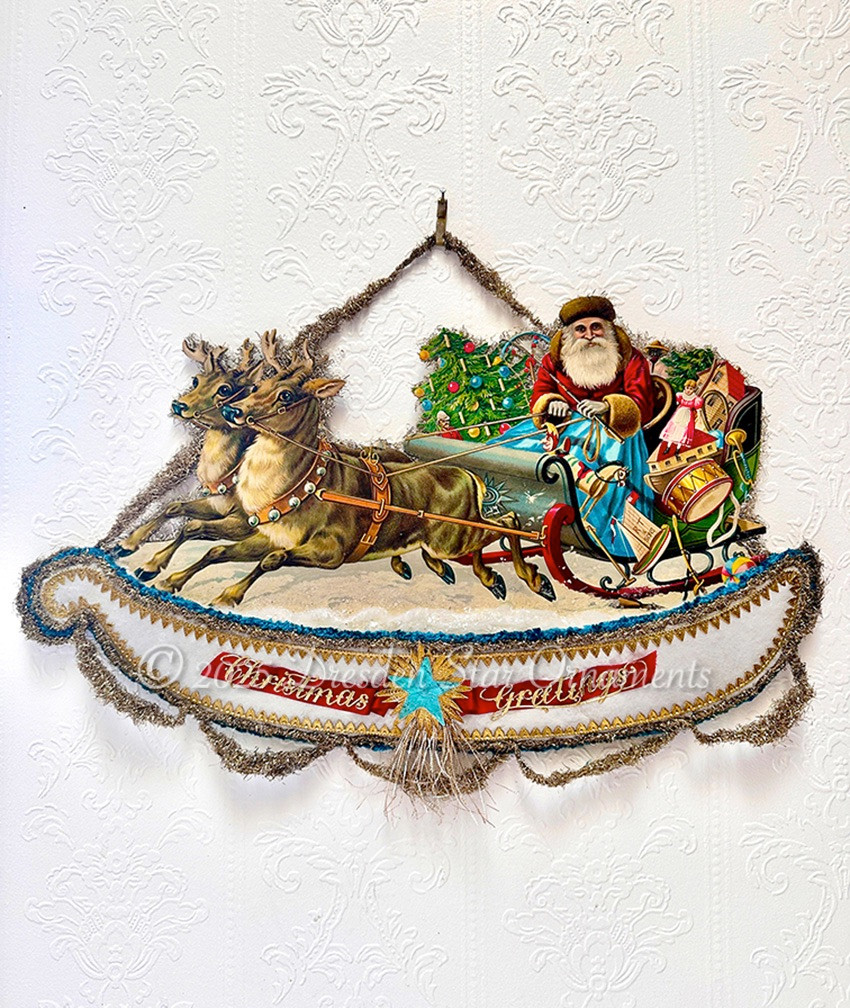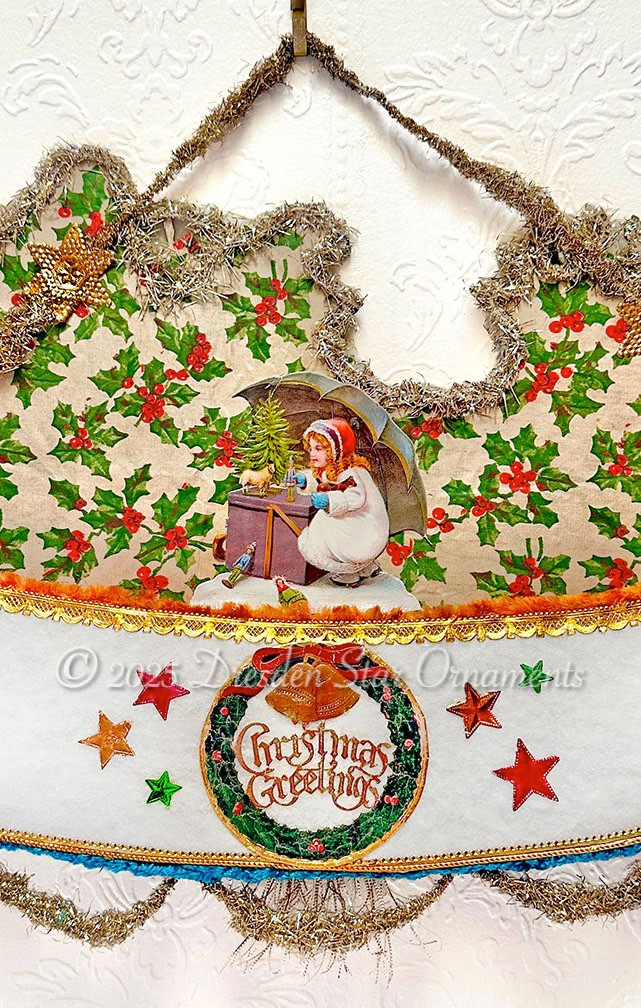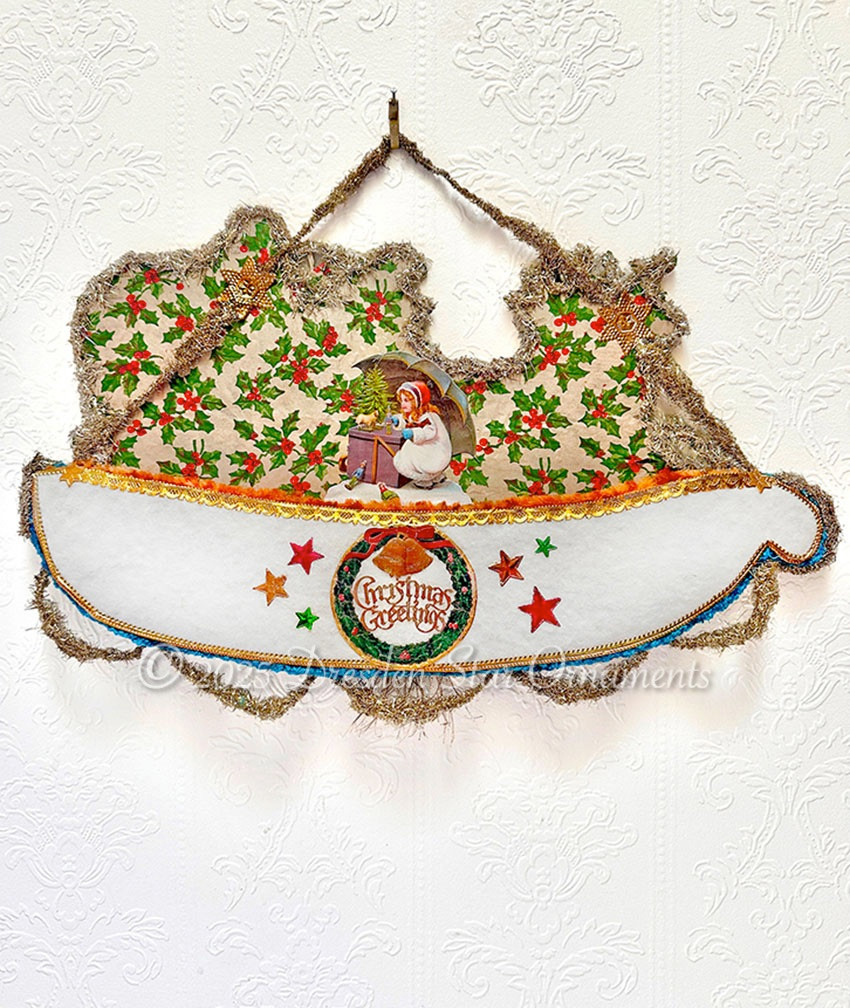-
One-of-A-Kind Ornaments
- New Arrivals 12-7-25
- All Ornaments for Sale
- Glass Ornaments
- Tree Toppers
- Cotton Ornaments
- Candy Containers
- Paper Ornaments
-
Sold Ornaments Gallery
- Sold Christmas Ornaments
- Sold Fantasy Ornaments
- Sold Animal Ornaments
- Sold St. Patrick's Day
- Sold St. Valentine's Day
- Sold Easter/Spring Ornaments
- Sold Patriotic Ornaments
- Sold Halloween Ornaments
- Sold Glass Ornaments
- Sold Tree Toppers
- Sold Candy Containers
- Sold Cotton Ornaments
- Sold Paper Ornaments
- On Sale Now!
- Clearance Items!
- Custom Orders
- Glass Bead Garlands
- Feather Trees
- On Sale Now!!!
-
Product Description
12” Tall x 18” Wide; A stunning showpiece for a large tree or mantle/wall display
SPECIAL FEATURES
Bold, beautiful and crafted for collectors, this truly is the largest die-cut illustration I have ever made into an ornament. It’s reminiscent of many Victorian parlors where trees that were so big with the top branch were bent over from hitting the high 12 foot ceilings. These monstrous fir trees were perfect for homemade ornaments made with giant European die-cut papers mixed with a creative mix of tinsel and cotton batting.
This rare 14 inch wide scrap is in amazing condition considering that it is over 150 years old. Santa, sleigh laden with toys, and two reindeer were just too big to pair with a glass ornament (to say the least). I used my imagination and made a two-part cardboard “boat”, covering the pieces with antique cotton batting before putting them together. The swag tinsel roping (garland) is Victorian era and is called bump tinsel. It makes beautiful loops along the bottom and follows the sides in a triangle shape to frame Santa. Blue chenille matches the color of Santa’s lap robe, Rare Dresden paper “Christmas Greeting” script is backed with antique silk red ribbon, and trims finish off the boat shape to tie it in with the colors of the illustration.Lovingly handcrafted and signed by Gail Giaimo
THIS ONE-OF-A-KIND ORNAMENT IS MADE ALMOST EXCLUSIVELY WITH ANTIQUE AND VINTAGE MATERIALS to include: glass ornaments from the 1890s to1950s, most of which were made in Germany; colorful Victorian embossed & die-cut paper “scraps” and chromolithographs from postcards and advertising trade cards, made in Europe between the 1870s and 1910; antique and vintage fabric to include chenille, lace, ribbon and metallic trims; antique and vintage tinsel from tree garlands and old-stock German-made Lametta tinsel; gold and silver old-stock Dresden paper trims, crepe paper, foil, gift wrap, spun glass, and other embellishments. Items described as “antique” are dated between 1870 and the early 1900s (prior to WWI). Items described as “vintage” are dated between 1915 (WWI) and the 1950s (mid-century). We also use Dresden trims (only on occasion) and crinkle wire (always used for durability) made more recently in Germany using techniques and equipment that have not changed over the past 150 years.
-
Product Reviews
-
Find Similar Products by Category






